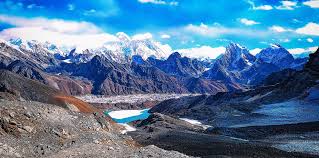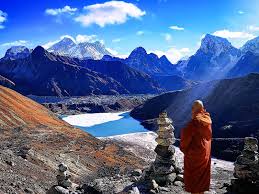

Everest Base Camp (EBC), located at an altitude of 5,364 meters (17,598 feet), is one of the most iconic trekking destinations in the world. Nestled in the heart of the Khumbu region in Nepal, this trek offers trekkers an opportunity to witness the grandeur of Mount Everest, the tallest trek Everest Base Camp mountain on Earth. Whether you’re an experienced trekker or a novice looking for a challenge, the Everest Base Camp trek promises an unforgettable experience.
Why Trek to Everest Base Camp?
The Everest Base Camp trek is more than just a physical challenge. It’s a journey into the heart of the Himalayas, where adventure meets spirituality, and natural beauty is unparalleled. Here are a few reasons why it’s a must-do for avid trekkers:
1. Breathtaking Views of the Himalayas
The trek offers spectacular views of some of the world’s highest peaks, including Mount Everest (8,848 meters), Lhotse (8,516 meters), and Nuptse (7,861 meters). Along the way, you’ll be treated to awe-inspiring vistas of snow-capped mountains, glaciers, and lush valleys.
2. Cultural Immersion
The Everest region is home to the Sherpa people, whose rich culture and traditions add depth to the trekking experience. Along the trek, you’ll pass through several Sherpa villages, including Namche Bazaar, Tengboche, and Dingboche, where you can visit monasteries, interact with locals, and learn about the Sherpa way of life.
3. A Sense of Accomplishment
Reaching Everest Base Camp is a significant achievement for any trekker. It’s not just about the physical journey, but the mental strength and perseverance required to complete the trek. The feeling of standing at the base of the world’s highest peak is truly priceless.
4. A Bucket-List Adventure
The Everest Base Camp trek is one of the world’s most famous trekking routes. For many adventure enthusiasts, it’s a bucket-list experience, offering a chance to push physical limits, conquer the challenges of high-altitude trekking, and enjoy a truly unique adventure.

Best Time to Trek to Everest Base Camp
The best time to trek to Everest Base Camp is during the spring (March to May) and autumn (September to November) seasons. During these months, the weather is clear, and temperatures are relatively mild, making trekking conditions more favorable. The skies are clear, offering the best views of Mount Everest and the surrounding peaks.
- Spring (March to May): This is the peak season for the EBC trek, as the weather is pleasant, and wildflowers bloom along the route.
- Autumn (September to November): After the monsoon season, the weather is crisp, and the air is clear, making it ideal for trekking.
Winter (December to February) and Summer (June to August) can be challenging due to extreme cold or the monsoon rains, so it’s best to avoid these months if you’re not an experienced trekker.
The Everest Base Camp Trek Itinerary
The Everest Base Camp trek usually takes about 12 to 14 days to complete, depending on your pace and acclimatization needs. Here’s an overview of a typical itinerary:
Day 1: Arrival in Kathmandu
Fly into Kathmandu, Nepal’s capital, where you’ll get the chance to explore the city, get permits, and prepare for your trek.
Day 2: Kathmandu to Lukla
Take a flight from Kathmandu to Lukla (2,860 meters), the gateway to the Everest region. From Lukla, you’ll begin your trek to Phakding (2,610 meters).
Day 3: Phakding to Namche Bazaar
Today’s trek leads you through forests and along riverbanks to reach Namche Bazaar (3,440 meters), a bustling town where trekkers acclimatize.
Day 4: Acclimatization Day in Namche Bazaar
This day is spent acclimatizing to the altitude. You can take a short hike to Hotel Everest View for panoramic views of Everest or visit the local museums and markets.
Day 5: Namche Bazaar to Tengboche
Trek through rhododendron forests to reach Tengboche (3,860 meters), home to the famous Tengboche Monastery, where you can enjoy stunning views of Everest, Lhotse, and Ama Dablam.
Day 6: Tengboche to Dingboche
Continue trekking towards Dingboche (4,410 meters), passing through beautiful villages and yak pastures. This is a great spot to acclimatize further.
Day 7: Acclimatization Day in Dingboche
Another day for acclimatization. You can hike to Nangkartshang Peak for more breathtaking views or rest to prepare for the final push.
Day 8: Dingboche to Lobuche
Trek from Dingboche to Lobuche (4,940 meters), crossing high-altitude terrain with incredible views of the surrounding peaks.
Day 9: Lobuche to Everest Base Camp
The long-awaited day! Trek from Lobuche to the Everest Base Camp (5,364 meters). Celebrate your arrival with panoramic views of the Everest glacier and the towering peaks of the Himalayas.
Day 10: Everest Base Camp to Gorak Shep
After visiting Everest Base Camp, trek back to Gorak Shep (5,164 meters) for an overnight stay. Gorak Shep is the last stop before ascending to Kala Patthar.
Day 11: Gorak Shep to Kala Patthar and Back to Pheriche
Wake up early to hike to Kala Patthar (5,545 meters) for the best sunrise view of Mount Everest. Then descend back to Pheriche (4,280 meters) for the night.
Day 12: Pheriche to Namche Bazaar
Retrace your steps back to Namche Bazaar for some well-deserved rest and relaxation.
Day 13: Namche Bazaar to Lukla
Descend to Lukla for your flight back to Kathmandu.
Day 14: Return to Kathmandu
Fly back to Kathmandu and enjoy the rest of your time in the capital before heading home.

Preparation for the Everest Base Camp Trek
Proper preparation is essential to ensuring a safe and enjoyable trek to Everest Base Camp. Here’s what you need to know:
1. Physical Fitness
The trek to Everest Base Camp is challenging due to the altitude and long trekking days. Regular cardio workouts, strength training, and hiking in preparation will help you build stamina and endurance.
2. Acclimatization
Trekking at high altitudes requires acclimatization to avoid altitude sickness. Take it slow, stay hydrated, and rest when needed. Don’t rush your ascent to higher elevations.
3. Packing
Ensure you pack the right gear for the trek, including durable trekking boots, warm clothing (layers), a sleeping bag, trekking poles, and a daypack. Essential items like sunscreen, sunglasses, and a first-aid kit should also be packed.
4. Permits
You’ll need a Trekking Permit (TIMS card) and a Sagarmatha National Park Permit to trek in the Everest region. Your guide or trekking agency can help you arrange these.
Tips for a Successful Everest Base Camp Trek
- Stay Hydrated: Altitude can cause dehydration, so drink plenty of water throughout the trek.
- Don’t Rush: Take your time, especially when ascending to higher altitudes, to allow your body to adjust.
- Listen to Your Guide: A knowledgeable guide can offer insight into the route, help you avoid risks, and ensure your safety.
- Respect Local Customs: Be mindful of local traditions and respect the Sherpa culture, including greetings and etiquette.
Conclusion
The Everest Base Camp Trek is a challenging yet immensely rewarding adventure that offers stunning views, cultural experiences, and a sense of achievement. With proper preparation, you can embark on this iconic journey and create memories that will last a lifetime. Whether you’re a seasoned trekker or a first-timer, the EBC trek is an experience unlike any other. Don’t miss your chance to stand at the foot of the world’s highest peak – Everest Base Camp is waiting for you!




Cool stuff you have and you keep overhaul every one of us Toms Decor